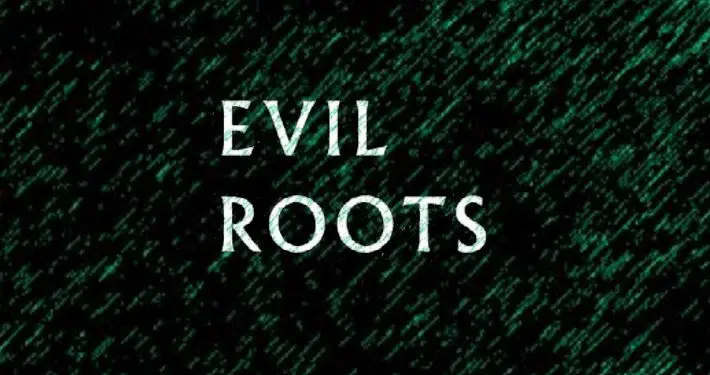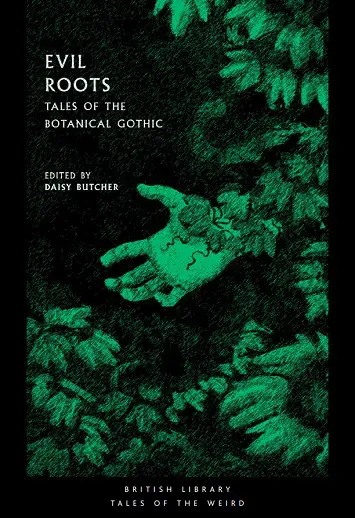Evil Roots: Killer Tales of the Botanical Gothic – Review

By David Schuster
Any gardener who’s ever done battle with brambles knows that all weeds want to take over the world, it’s in their nature. They are driven to spread their seed as far and wide as possible, whilst simultaneously doing their best to smother, strangle or starve your prized flowers out of existence. That’s the premise for Evil Roots, the thirteenth volume in the British Library’s cleverly conceived and popular Tales of the Weird series, and the first to be edited by Daisy Butcher.
Aptly named Daisy, a researcher of Gothic and Horror literature has given herself a more difficult task than usual though: It’s an inescapable fact that the world now is very different to that of the 1800’s, when many of these works were first printed. Darwin published Insectivorous Plants in 1875 and The Power of Movement in Plants two years later, and the links between the vegetable and animal kingdoms caught the imagination of authors and public alike in a way which is not the case now.
Whilst train travel, which forms the basis for a previous book, and likewise the oceans in From the Depths, still hold fascination and mystery, the idea of sentient, mobile vegetation does not, and can inadvertently become comic. Such is the case of the inaccurately named ‘Professor Jonkin’s Cannibal Plant’, to the extent that I wondered if it were written tongue-in-cheek.
Unintended humour also arises in the first, and most densely written entry, ‘Rappaccini’s Daughter’. The thick, purple prose is exemplified by the scene where the main character catches his first glimpse of a beautiful young lady: “She looked redundant with life, health and energy; all of which attributes were bound down and compressed, as it were, and girdled tensely, in their luxuriance, by her virgin zone.” That aside, these are well written, often by well-known authors, including Arthur Conan Doyle, H. G. Wells, M. R. James, Ambrose Bierce and, somewhat surprisingly, Edith Nesbit.
 “Chilling insight”
“Chilling insight”
The most engaging stories though are those where the plants play a more subtle role in the horror. ‘The Woman of the Wood’, by Abraham Merrit diverges into the realm of the fae, territory which would now be categorised as Fantasy. There’s an entry from the master of short Gothic horror, M. R. James, ‘The Ash Tree’. Also worthy of note is ‘The Giant Wisteria’, by Charlotte Perkins Gilman, which, despite being only ten pages long, offers a chilling insight into the type of everyday horror still being endured by women around the world.
Best of all is ‘The Voice in the Night’, a powerful study of love and desperation with a gradually building feeling of inescapable doom. This was written by William Hope Hodgson, who ran away to sea in his teens and served in the merchant navy, before turning his hand to writing sea-based mysteries. His excellent works have appeared before in this British Library series, appropriately in From the Depths.
There is one small but irritating difference in this latest release: Previous editions, have included a short, and usually fascinating ‘About the author’ article prefacing each chapter. In Evil Roots, Butcher has replaced this with an ‘About the story’, which combines both information about the writer with a brief synopsis. Now, whilst I’ll freely admit that many Gothic stories telegraph their denouement so clearly you can easily predict the ending, this does seem a little unnecessary. After all, you are about to read it!
Still not convinced by the botanical threat?
Consider this: The largest living thing in the world is the Armillaria Ostoyae, which covers almost four square miles of the Malheur National Forest in Oregon. It’s not a plant, or an animal; it’s a fungus, and it’s malignant. Parasitic, it grows by feeding off tree roots, eventually killing them; and it’s got a whole forest in its clutches.
All in all, Evil Roots is a worthy entry in the Tales of the Weird series, but one of more interest to Gothic horror completists than those looking for a casual read.
‘Evil Roots: Tales of the Botanical Gothic’ is published by the British Library, £8.99 paperback








